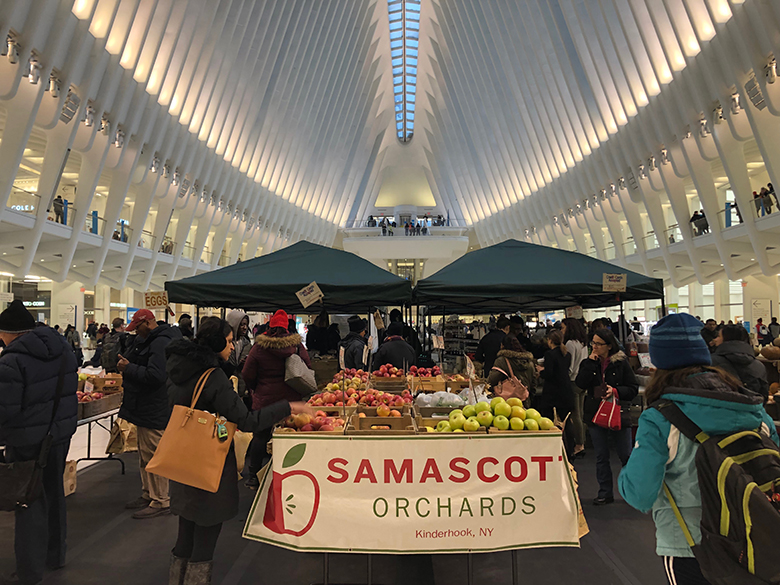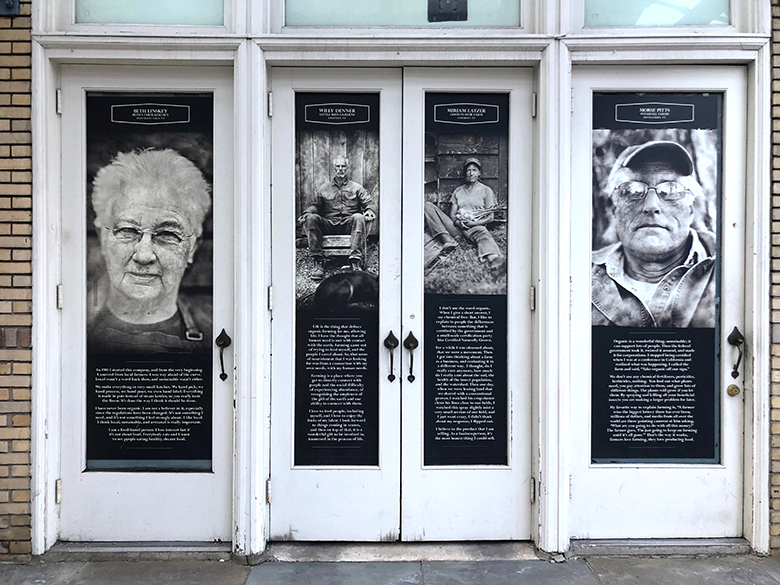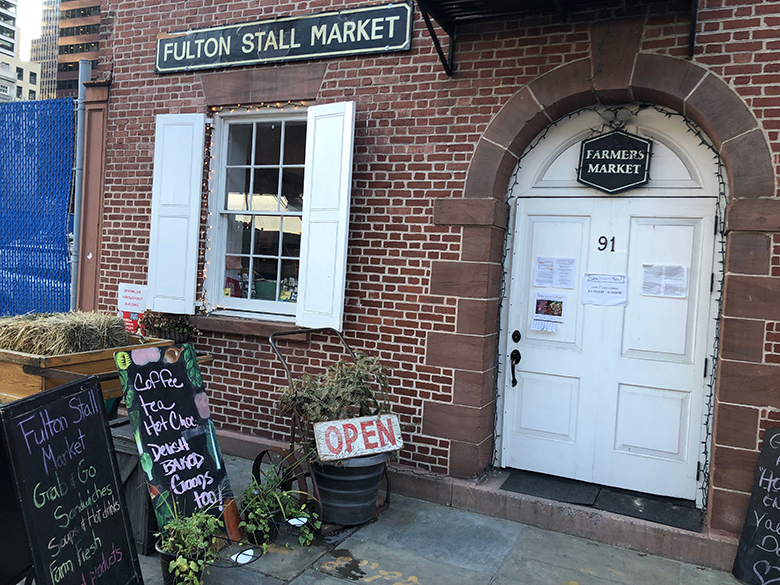
On a recent Tuesday evening, commuters and tourists outside the Oculus in lower Manhattan battled sleet with umbrellas and trekked over scattered sheets of ice and shoe-soaking pools of slush.
Inside, warm and dry, they sorted happily through overflowing crates of sweet potatoes and turnips from Samascott Orchards and shared baked goods from Meredith’s Bread.

“It’s been great,” said Brian Foley, owner of water buffalo farm Riverine Ranch, when asked if the busy state of the market was typical. “And you know what the best part is? We’re inside.”
In a city flush with farmers markets even during the winter, that aspect is rare.
While GrowNYC has set up a few small farm stands indoors (like inside the Staten Island Ferry Terminal), the Greenmarket at the Oculus is its first big, well-rounded market to serve New Yorkers within four walls (or a cavernous, ribbed dome).
Read more: Our Guide to Surviving the Dead of Winter
“The reason it doesn’t happen often is that it’s logistically very complicated,” said Liz Carollo, assistant director of GrowNYC’s Greenmarket program. The biggest issue is that farmers have to get all of their product inside, as opposed to outdoor markets where they can work directly out of their trucks or simply lift from truck to table. To make the Oculus market work, Carollo said, the Port Authority and Westfield had to be invested in helping producers load in and out. “It’s just a matter of finding the perfect partners that understand the nuances of running a farmers market,” she said. During warmer months, the market will move back outside.
https://www.instagram.com/p/BszAHdglNDA/
Meanwhile, less than a mile away in the Seaport District, Fulton Stall Market is taking a different approach to selling farm-fresh local food indoors.
The nonprofit Fulton Market Association operates an outdoor farmers market with about 20 producers on Pier 17 on Sundays from April through December. But Fulton Stall Market, just across the street at 91 South Street, is a year-round weatherproof sister operation that currently sells products from about 115 producers. “We are celebrating the producers here,” said Bob Lewis, public market adviser to the organization, who was one of the original founders of Greenmarket and worked for the New York State Department of Agriculture and Markets for decades.

Inside the cozy market, shelves are stocked with fermented foods from Hawthorne Valley Farm, apples and cider from Breezy Hill Orchard, and frozen pastured meats from Carrs Creek. There are fresh vegetables, eggs, and cheeses from nearby farms, plus small-batch New York City products like Bronx Hot Sauce, Brooklyn Roasting Company coffee, and Granola Lab granolas.
The main difference is that the products are aggregated rather than farmers each selling their own products. Farmers do have a presence, though, when they drop off product to stock the shelves or for the weekly CSA, and for events that take place in a community space upstairs.
They’ll have an even bigger role in the future. “This is a microcosm of a larger project,” Lewis said, explaining that the small market is the first step toward building a larger, 10,000-square-foot indoor public market that will feature producers and honor the neighborhood’s market history all year long.
For now, shoppers can meet some of the producers via a photo installation around the corner on Front Street, which showcases farmer portraits and their philosophies. But they’ll have to go outside for that.





